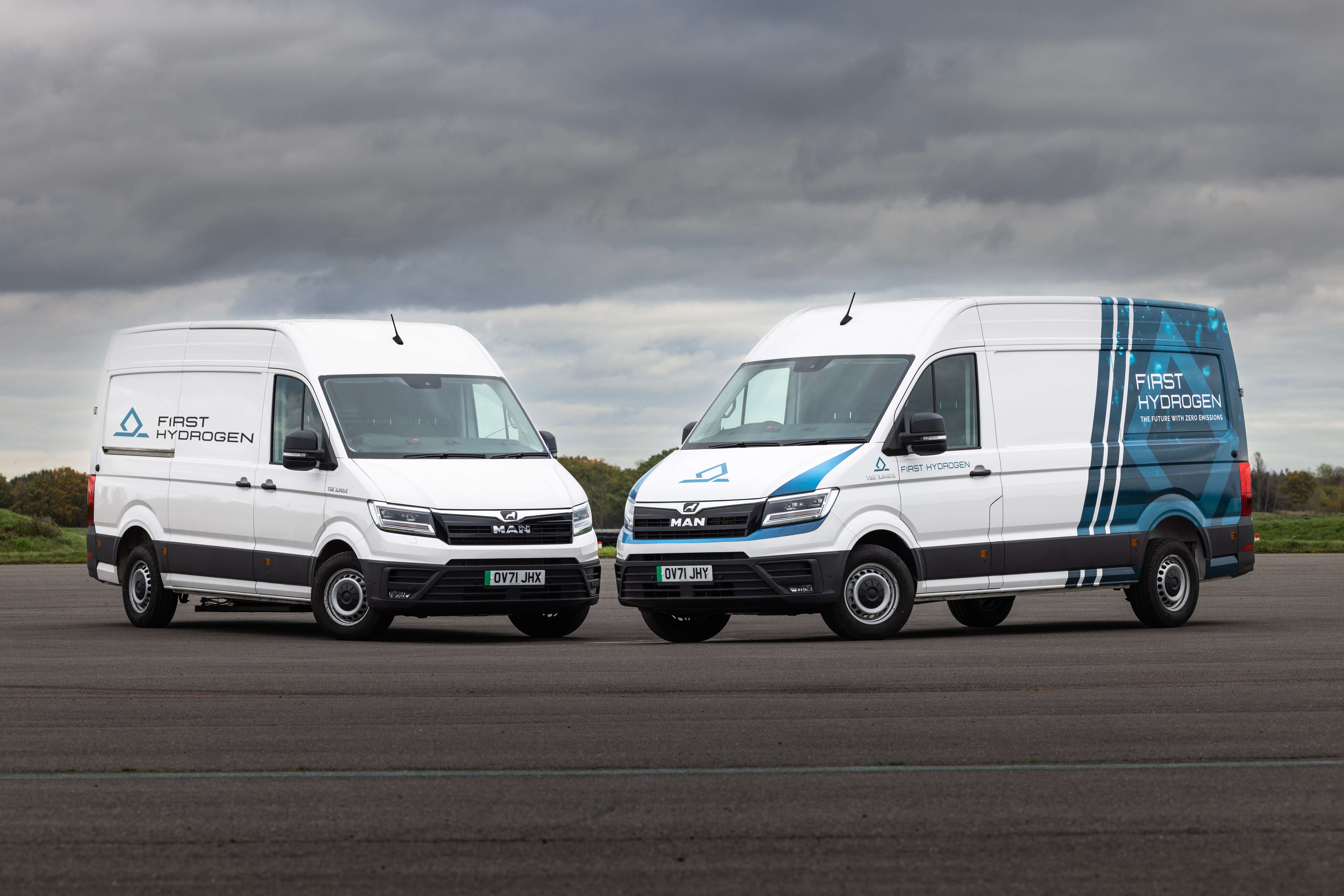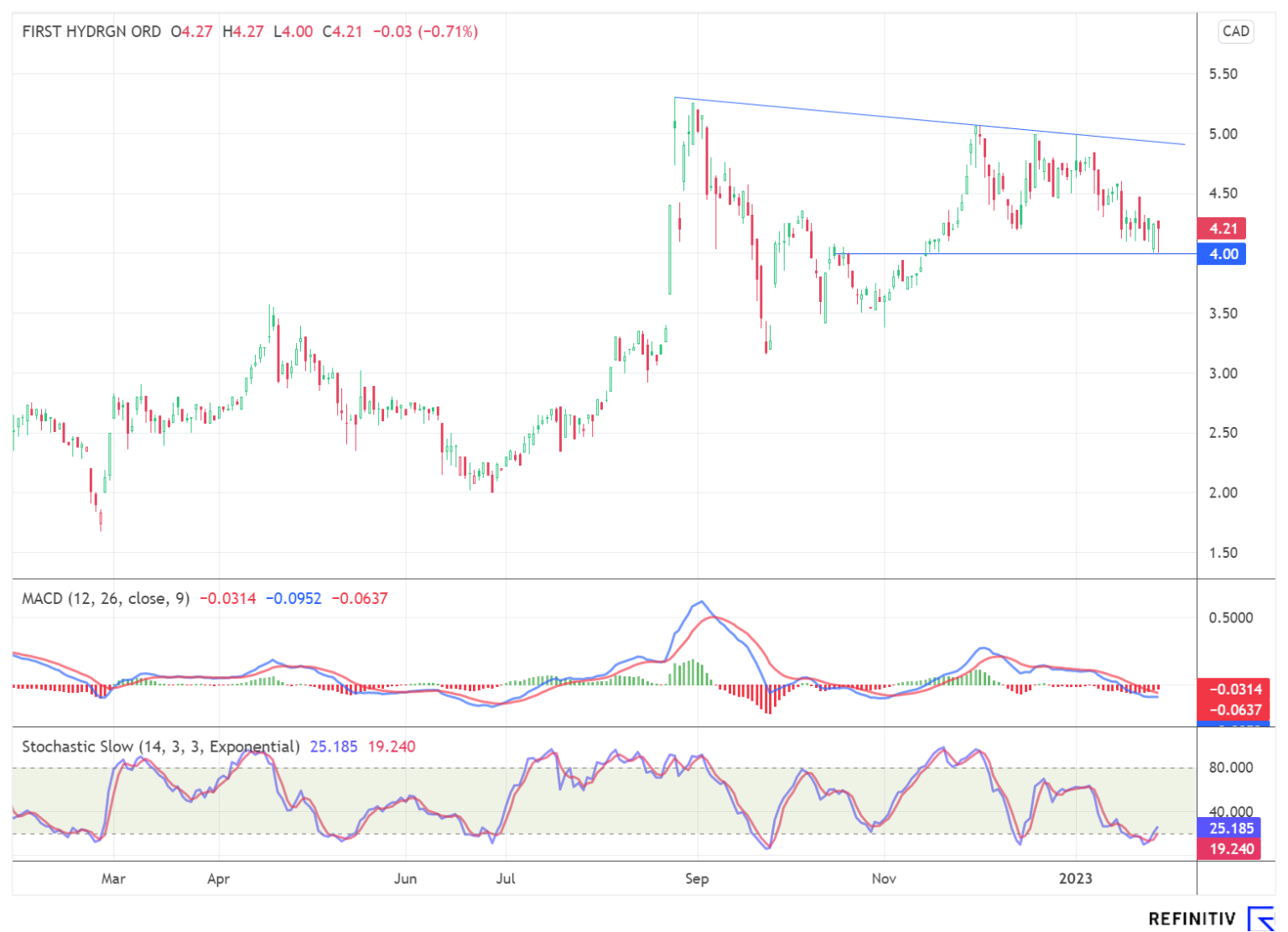Transport sector condemned to action
Europe is to become climate neutral by 2050 and save at least 55% of greenhouse gases by 2030 compared to 1990 levels. With the "Fit for 55" package, EU legislation has been tightened once again. A special role is played by the problem child of the energy transition, the transport sector, which accounts for around one-fifth of all greenhouse gas emissions in the European Union. According to the Federal Statistical Office in Germany, emissions in the Corona year 2020 were 690 million metric tons of CO2 equivalents, an increase of 11% over 1990. Heavy-duty trucks and buses accounted for around 28% of this figure, while light-duty commercial vehicles accounted for a further 11%. 1
Advantage of hydrogen
These ambitious targets cannot be achieved with conventional diesel and gasoline engines. The automotive and commercial vehicle industries have had to rethink their approach. While the passenger car sector currently relies on battery-powered vehicles, hydrogen fuel cell technology offers considerable advantages for light and heavy commercial vehicles.
of light commercial vehicles had an alternative drive system at the end of 2021
For example, hydrogen has a high energy density of 33.33 kWh/kg, providing almost as much energy as 3kg of gasoline. The lithium-ion battery in comparison comes to a maximum of 0.5 to 0.6 kWh/kg. Due to this, the fuel cell enables higher ranges as well as shorter refueling times. In addition, the switch to battery-powered heavy-duty vehicles is unprofitable for the operator. A semi-truck with a battery large enough to power a fully loaded truck for about 500km would have to sacrifice about a third of its payload to the batteries, but the range of a diesel truck, is on average, 2.5 times that.

Logistics growth market
Corona changed many things, including consumer buying behavior due to the extended store closures caused by the many lockdowns. Due to the Internet and the exponentially growing e-commerce market, the pressure on logistics providers such as DHL, UPS, Amazon and Hermes increases enormously. On the one hand, delivery should be smooth and fast with low costs; on the other hand, companies will have to pay attention to compliance with emission targets in the future. According to a market research report by The Business Research Company, the global light commercial vehicle market is expected to grow from USD 568.17 billion in 2022 to USD 1,001.35 billion in 2027 with an average annual growth rate of 11.8%.
Demand is enormous
As of December 31, 2021, according to First Hydrogen, there were 29 million vans on the road in the EU and 3.9 million in the UK, with 93% powered by diesel and only 2% equipped with alternative propulsion systems. 2 . The current average age of vans is 10.9 years with an optimal fleet replacement of 5 years and therefore points to a change to alternative propulsion systems, especially small commercial vehicles with hydrogen and fuel technology.
Fuel cells are the key to the small commercial vehicle sector achieving its emissions targets, as shown by the high level of investment being made in the sector by global players such as Renault, Hyundai and Stellantis. For example, the parent company of Opel, Peugeot and Citroën announced plans to mass-produce fuel cell-powered light commercial vehicles at its Hordain plant in France. Stellantis did not yet say when series production would begin. From 2024, however, the factory is expected to have a production capacity of 5,000 fuel cell vehicles per year. 3

First Hydrogen - The cards are reshuffled
The battle for market share is in full swing, with the established players investing millions in the new types of models. In addition, new producers that could shake up the market due to their unique business model are entering the market. One of these newcomers is First Hydrogen, a company based in Vancouver and London. The association of global leaders with decades of experience in renewable energy, hydrogen and fuel cell technology has set its sights on becoming the leading designer and manufacturer of zero-emission, long-range hydrogen-powered vehicles in the UK, EU and North America.
In doing so, the Company's "best-of-strategy " is on track to turn its goals into reality with comparatively little lead time. That is because integrating existing technologies and a proven chassis can yield both significant cost and time benefits. If CEO Balraj Mann's goal of delivering between 10,000 and 20,000 units of the First Hydrogen Utility Van per year starting in 2025/2026 sounded utopian not long ago, it could now come true sooner than many expected. Because the successes of recent months are clearly pointing in the direction of series production.
Right on schedule
We have already explained the Canadians' business model in previous reports. The development and construction of two hydrogen-powered light commercial vehicles (LCVs) for demonstration purposes was launched in 2021. On board at the time were
vans in the EU are outdated and will have to be renewed or converted in the next few years.
the two partners Ballard Power and AVL Powertrain. The vans, for which the MAN eTGE served as a so-called "donor vehicle," are equipped with the latest generation of Ballard FCgen-LCS fuel cells, which give the vehicles a range of over 500km. AVL Powertrain Limited, the world's largest independent automotive engineering, simulation and testing company, was responsible for the vehicle concept, architecture and production.
Meanwhile, the demonstration vehicles have been tested and are expected to be road-ready in Q4 2022 so that early 2023 tests can be run on the roads with customers. Among the customers are at least 13 UK fleet operators across a range of industries, including telecommunications, utilities, infrastructure, delivery services, grocery and healthcare. Approval by the Vehicle Certification Agency, the UK's vehicle licensing authority for road transport in the UK, generated considerable interest from fleet managers.

Global champion as styling partner
In addition to the partnerships with Ballard Power and AVL, another market leader, EDAG Group, has been secured as a design partner. EDAG is the world's largest independent service provider for the international mobility industry and provides engineering services in the areas of vehicle technology, electrics/electronics and production solutions.
of all light and heavy commercial vehicles in Germany were powered by diesel as of the end of 2021
First Hydrogen receives support in commercial vehicle development, with the aim of making zero-emission vehicles accessible to fleet managers, thus pushing the door wide open for series production and the mass market.
Next-generation unveiling
First images of the second generation design for the zero-emission light commercial vehicles have now been released. These can be scaled to different vehicle heights and lengths. The result will be modular vehicles that allow customization for operational use and can be used for a variety of applications, including express delivery, grocery stores, construction and utility work, or emergency services.
Here, the front features an intelligent digital panel that shows the configuration of the daytime running lights and is designed to give the vehicle a recognizable face and identity, as well as excellent visibility. The rear view features vertical taillights on either side of the main cargo port. The design follows function as it can accommodate different types of doors, such as tailgates, gates and shutters.
Steve Gill, Chief Executive Officer of automotive at First Hydrogen added during the presentation that the goal with this next vehicle series is to offer the commercial vehicle market a complete solution for operational flexibility. "This preview shows the careful consideration that has gone into combining aesthetics with technical excellence; the vehicle configuration and signature light panels showcase a solid, standout design that is iconic and will be a real head-turner."

Interim conclusion
With EDAG Group, a design partner could be won to develop the next-generation vehicles towards market maturity and contribute to entering the mass market. With the presentation of the first pictures, the signature of the market leader could already be read.
In addition to developing the latest generation of utility vans, First Hydrogen is positioning itself in all areas of the hydrogen sector with its comprehensive "Hydrogen-as-a-Service" model and intends to offer its clientele a complete value chain in the future. This includes the development of a hydrogen refueling system, and the production and distribution of green hydrogen. Based on this, we expect the positive news flow to continue in the near future.
First Hydrogen Energy CEO Robert Campbell will present the Company at the 6th IIF - International Investment Forum on February 15, 2023. Registration for the virtual event is free.
The update is based on the report 07/2022

